I am working with IDS-3240CP-NIR cameras and operating them with the pyueye package that accompanies them. Because these cameras are being used to calculate NDVI from imagery between two different cameras, I need to ensure they have equivalent parameters except for exposure, which will be auto adjusted for lighting conditions and adjusted for in post processing. The trouble is, I'm not sure how to set the auto exposure in pyueye to produce good results. When I use the IDS GUI software and flip on auto exposure, things look great. But when I try to do this in software, the imagery is way over exposed.
From what I can tell in the documentation, there are two ways to set the auto exposure: the pyueye.Is_SetAutoParameter function (https://en.ids-imaging.com/manuals/ids-software-suite/ueye-manual/4.93/en/is_setautoparameter.html?q=set+auto+parameter) and the pyueye.Is_AutoParameter function (https://en.ids-imaging.com/manuals/ids-software-suite/ueye-manual/4.93/en/is_autoparameterautoexposure.html?q=aes). The Is_AutoParameter function may be the superior method based on how the documentation talks about it, but I have not been able to figure out how to use this function (I believe I am sending the wrong type of pval's). Instead, I've been setting the auto shutter speed through the Is_SetAutoParameter, but results are still overexposed.
Here is some of the code I am running:
hCam = ueye.HIDS(1)
sInfo = ueye.SENSORINFO()
cInfo = ueye.CAMINFO()
pcImageMemory = ueye.c_mem_p()
MemID = ueye.int()
rectAOI = ueye.IS_RECT()
pitch = ueye.INT()
nBitsPerPixel = ueye.INT(32)
channels = 4
m_nColorMode = ueye.IS_CM_RGBY8_PACKED
bytes_per_pixel = int(nBitsPerPixel / 8)
# Camera Init
nRet = ueye.is_InitCamera(hCam, None)
if nRet != ueye.IS_SUCCESS:
print("is_InitCamera1 ERROR")
# Get Sensor Info
nRet = ueye.is_GetSensorInfo(hCam, sInfo)
if nRet != ueye.IS_SUCCESS:
print("is_GetSensorInfo ERROR")
print(sInfo.strSensorName)
# Set Display Mode
nRet = ueye.is_SetDisplayMode(hCam, ueye.IS_SET_DM_DIB)
# Set Color mode
nRet = ueye.is_SetColorMode(hCam, ueye.IS_CM_RGBY8_PACKED)
# Area of Interest
print("rectAOI type:")
print(type(rectAOI))
nRet = ueye.is_AOI(hCam, ueye.IS_AOI_IMAGE_GET_AOI, rectAOI, ueye.sizeof(rectAOI))
if nRet != ueye.IS_SUCCESS:
print("is_AOI ERROR")
# Define Width and Height
width = rectAOI.s32Width
height = rectAOI.s32Height
# Prints out some information about the camera and the sensor
print("Camera 1")
print("Camera model:\t\t", sInfo.strSensorName.decode('utf-8'))
print("Camera serial no.:\t", cInfo.SerNo.decode('utf-8'))
print("Maximum image width:\t", width)
print("Maximum image height:\t", height)
print()
# Allocate Image Memory
nRet = ueye.is_AllocImageMem(hCam, width, height, nBitsPerPixel, pcImageMemory, MemID)
if nRet != ueye.IS_SUCCESS:
print("is_AllocImageMem ERROR")
# Add to Sequence
nRet = ueye.is_AddToSequence(hCam, pcImageMemory, MemID)
if nRet != ueye.IS_SUCCESS:
print("is_AddToSequence ERROR")
# Capture Video
nRet = ueye.is_CaptureVideo(hCam, ueye.IS_DONT_WAIT)
if nRet != ueye.IS_SUCCESS:
print("is_CaptureVideo ERROR")
# Inquire Image Memory
nRet = ueye.is_InquireImageMem(hCam, pcImageMemory, MemID, width, height, nBitsPerPixel, pitch)
if nRet != ueye.IS_SUCCESS:
print("is_InquireImageMem ERROR")
# Image Display
array = [0]
# Generate Image File Name
timestr = str(datetime.now().strftime('%Y-%m-%d_%H:%M:%S'))
image_name = "/home/pi/LakeWheelerTurf/TurfImages/turfcam1_" + timestr + ".bmp"
pval1 = ctypes.c_double(1)
pval2 = ctypes.c_double(0)
nRet = ueye.is_SetAutoParameter(hCam, ueye.IS_SET_ENABLE_AUTO_SHUTTER, pval1, pval2)
# Continuous image display
photo_counter = 0
while (nRet == ueye.IS_SUCCESS):
pval1 = ctypes.c_double(1)
pval2 = ctypes.c_double(0)
nRet = ueye.is_SetAutoParameter(hCam, ueye.IS_SET_ENABLE_AUTO_SHUTTER, pval1, pval2)
nRet = ueye.is_SetAutoParameter(hCam, ueye.IS_GET_ENABLE_AUTO_SHUTTER, pval3, pval2)
print(pval3.value)
#Below is my attempt to get the is_AutoParameter function to work (unsuccessful)
#pval1 = ctypes.c_void_p(1)
#pval2 = ctypes.sizeof(pval1)
#nRet = ueye.is_AutoParameter(hCam, ueye.IS_AES_CMD_SET_ENABLE, pval1, pval_sz)
#if nRet != ueye.IS_SUCCESS:
# print("AES ERROR")
while array[0] == 0:
array = ueye.get_data(pcImageMemory, width.value, height.value, nBitsPerPixel.value, pitch.value,
copy=False)
frame = np.reshape(array, (height.value, width.value, bytes_per_pixel))
photo_counter += 1
time.sleep(1)
if photo_counter >= 10:
break
matplotlib.pyplot.imsave(image_name, frame)
ueye.is_FreeImageMem(hCam, pcImageMemory, MemID)
ueye.is_ExitCamera(hCam)
return image_name
I'd be hugely appreciative if anyone can help me figure this out, I've been working on this for ages to no avail. Below are some samples of the imagery I'm able to get out of the GUI vs pyueye. Thanks!

